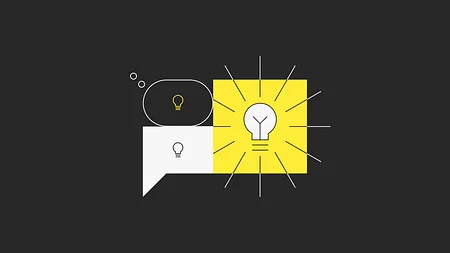Billions Spent: Where Has It Gone?
Every senior executive knows they need digital, every bank is spending billions on digital projects. So, why has so little digital transformation actually occurred?
If only those questions were the only ones that needed to be answered. You have to wonder what’s happened to the massive investments banks have already made. How much has your bank spent on digital transformation in the last decade and how would you rate it’s experience compared to say Airbnb, Uber, or Instagram?
Where has all the money gone?
Banks want to become truly digital and have invested a great deal in getting there. They want the cost reduction that comes from moving analogue processes and products to something digital and automated. They want the cost reduction that comes from moving away from physical branches to end to end digital services. They want to provide the kind of digital customer services people are growing used to and that are achieving massive commercial success like Amazon.
On paper it sounds great, buy a plan from a strategy consultancy, hire lots of externals to deliver a ‘transformation programme’ (it sounds official) and throw significant capital and labour internally at ‘transforming’. It’s a good process, in theory. But it’s essentially a paper-pushing exercise that has resulted in zero net-gain in 28 years. Some may have even lost money. Running as hard as you can to stay in place isn’t ever the best situation to be in, but it’s even worse when you’re paying for the privilege.
£250BN. That’s what staying still has cost banks so far.
To give you some perspective, because it is a staggering sum, £250BN could build and run 500 hospitals, launch 500 spaceships to Mars, and is roughly the GDP of Finland. After spending that enormous sum there’s nothing to show for it, banking still isn’t digital.
Actually, there has been one noticeable gain, every bank now has a pretty banking app. Every incumbent bank has a shiny app with a reasonably good looking interface. But dig a little deeper and you’ll see that the looks really are skin-deep. The underlying choices and propositions that created the app today are still the same as banking in the 1990s. There’s still a bloated spaghetti legacy system in place, straining to hold the whole thing together.
So, how do we reconcile the truly staggering amount of cash spent on digital transformation with lacklustre product? It’s not a big secret, just ask yourself who created your app? Who sold you that idea? Who delivered a sub-par product? And, most importantly, why did all those things happen?
It would be easy to say the issue was entirely due to consultancies taking advantage of a gap in the market and clients keen to keep up. But due diligence is a factor in any deal. And we can’t forget that banks are closely involved in the decision-making process with consultancies. Perhaps a significant reason at play is the lack of culture change in banks.
Why has there been no change?
In a connected world, it’s easy to forget how often miscommunications occur. Banks often believe they have a direct line to their customer views and needs through innovation labs and focus groups. Instead, focusing on end to end customer journeys is vital, you can actually compare journeys with your competitors through 11:FS Pulse. Without knowledge of what customers need to solve their problems, banks will fail to retain their business and lose out to those providing a more useful and loveable product.
Clinging to old ways of thinking will only result in the same mistakes being made and the same products being created. No matter how shiny your product is, if it doesn’t serve a meaningful purpose in customers’ lives then it’s pointless in the 21st Century. Banking is no longer about products customers don’t care about.
Modern banking needs to be focused on solving problems for customers and figuring out what their jobs to be done are. If you can deliver a minimum loveable product to your customers then you’re providing real value that affects them in their daily lives. That should be core to any proposition before even touching the development phase.
So, how do you achieve a digital transformation?
Digital transformation doesn’t actually exist. You can’t take a long-winded process with countless pointless redundancies and slow moving parts, and then expect it to become a seamless digital journey for customers. That’s just digitisation, it’s an exercise in engaging those who don’t know the industry and who have a stronger focus on increasing their bottom line than creating a better banking experience for customers.
What matters is being digital. Digital is a small team sport. It’s about creating a new process for customers that takes advantage of modern technology and providing the seamless experience they’ve come to expect from other industries. It requires a laser focused team of experts skilled in the digital space. You can’t throw an army of developers and designers at the problem and expect it to vanish, that type of thinking is where the problem exists. Digital is born to be agile, but the bureaucracy endemic to banks is consistently preventing them from achieving digital goals.
At the moment it appears as though the major banks are stuck playing catch up. Spending billions to just stay still.
One UK bank has pledged to spend at least £3 billion on transformation projects over the next three years, cumulatively that number will be way higher. But that equates to spending a lot of money investigating digital transformation and perfecting a product. Even if a useful digital product is created, it’s more than likely that with the speed incumbent banks move at they’ll deliver a solution that’s no longer relevant. Just like Bpay.
Financial institutions need to outsource their digital transformation work to consultancies that actually understand how to operate in digital. Highly competent experts who can act quickly and react even faster can create a platform that has real value for customers and achieve banks’ long term digital goals. Here at 11:FS, we have a select crew of experts who helped create digital assets across the world, including Monzo and Starling as well as many others.
Bear in mind none of this is even taking a look at what’s going on under the hood at banks. We’ll have more on that later...


